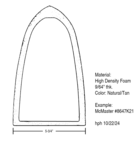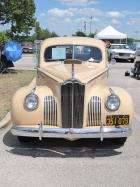|
value lash
|
||||
|---|---|---|---|---|
|
Home away from home

|
I have a 1934 320 cu in engine would like to know what the hot and cold value lash is?
Posted on: 2016/2/19 18:37
|
|||
|
||||
|
Re: value lash
|
||||
|---|---|---|---|---|
|
Home away from home

|
.004 intake and .006 exhaust - with a warm engine should work.
However, it is important to understand that tappets will develop a wear recess which is not easily measured so if the engine is old the recess may create misleading results.
Posted on: 2016/2/19 19:17
|
|||
|
||||
|
Re: value lash
|
||||
|---|---|---|---|---|
|
Home away from home

|
thank you
Posted on: 2016/2/21 10:41
|
|||
|
||||
|
Re: value lash
|
||||
|---|---|---|---|---|
|
Forum Ambassador

|
I do it with the engine running; though it gets cramped consider a helper, one to man the tappet wrenches, another with the feeler gauges. And set the engine to as low an idle speed as it can comfortable do, makes it easier. Not the most pleasant job but you only have to do it every 20,000 miles or so.
Posted on: 2016/2/21 10:47
|
|||
|
||||
|
Re: value lash
|
||||
|---|---|---|---|---|
|
Home away from home

|
I always preferred to not run clearances too tight as that can cause compression problems, but when I checked the clearances running I would check to see what gauge would fit, record the result on paper, and adjust with the motor off. That avoids the oily mess and burns.
For example: if running clearance on valve #1 is .008 then reduce the clearance by .002 with the motor off. This method avoids problems with where the cam lobe is because it simply reduces an existing clearance. As for what is a "clearance" the gauge should slide readily with only a slight feel of drag. As mentioned, all of this is academic in the absence of precisely milled tappets. When Packard built those motors the valve guides were bored in a mill to be precisely perpendicular to the individual tappets. This is beyond the resources of almost all motor rebuilders and why those motors were dead silent when new.
Posted on: 2016/2/21 16:22
|
|||
|
||||







